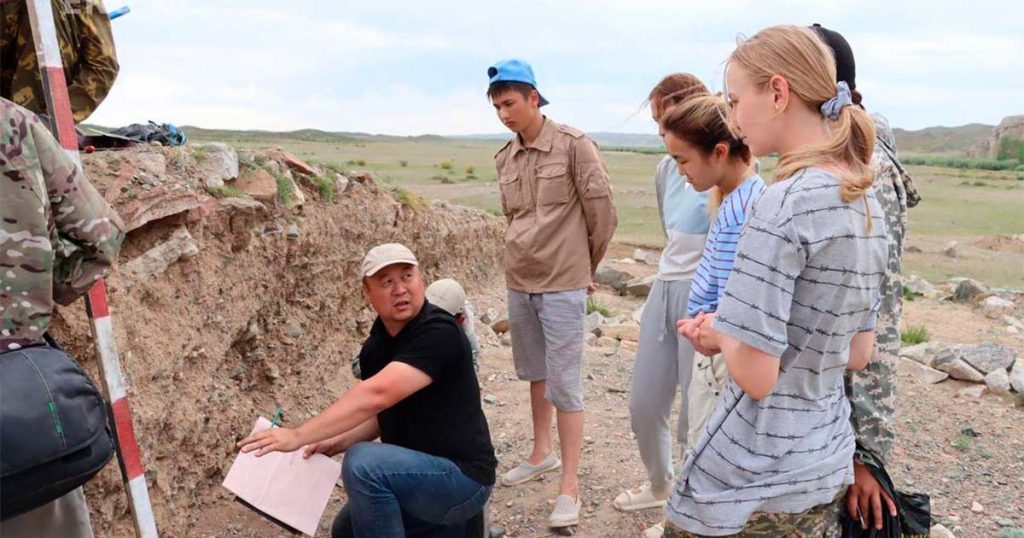nCa Report
A team of archaeologists of the L. N. Gumilyov Eurasian National University (ENU) of Kazakhstan has discovered a large-sized steppe pyramid of the Bronze Age, not found in the steppes of Eurasia.
According to a press release of ENU, excavations are underway in the Abai region.
The press release says that since 2014, the scientists of the Archaeology and Ethnology Department of the Faculty of History of the Eurasian National University have been conducting archaeological excavations at the Kyrykungir complex monument near Toktamys village in the Abai district of the Abai region. As a result of the research conducted with the participation of ENU students and masters, a large-scale steppe pyramid was discovered of the early second millennium BC, that is, four thousand years ago, the Bronze Age, not found before in the Eurasian steppe.
“The steppe pyramid is built with great precision, it is hexagonal. There are thirteen meters and eight rows of stones between each face. It is a very sophisticated complex structure with several circles in the middle. The exterior walls of the structure of this complex are dominated by images of various animals, especially horses, says the press release.
Ancient Origins reports that the pyramidical structure possesses a striking hexagonal form, with each face spanning a length of approximately 42 feet (12.8 meters). A glimpse at the photographs shared by the Ministry of Science and Higher Education of Kazakhstan shows that each terminal of the monumental wall is adorned by a grandiose upright black stone whose flattened facade faces outwards to the world beyond. Meanwhile, in between these resolute markers, a different kind of rock was used to create an imposing exterior wall.
Findings in excavations, ceramics, female gold earrings and other jewelry indicate that this Bronze Age was the center of culture in ancient times. This means that even at that time the cult of the horse was extremely high, as evidenced by the discovery of horse bones around the stone building. There are also images of camels,” Ulan Umitkaliyev, a historian, Head of ENU’s Archeology and Ethnology Department said.
Ancient Origins adds that the Eurasian steppe played a significant role in the Bronze Age, a period characterized by the widespread use of bronze for tools, weapons and other artifacts. The steppe region, which stretches from Eastern Europe to Asia, served as a conduit for cultural exchange, trade and the movement of people.
The steppe was home to various nomadic and semi-nomadic cultures that relied on pastoralism (animal herding) as a primary means of subsistence. These cultures included the Yamnaya, Andronovo, and Srubna cultures in Eastern Europe and Central Asia, known for their expertise in horse domestication , which facilitated mobility and warfare. The steppe cultures also had interactions with sedentary civilizations located on the periphery of the steppe, such as the Sumerians, Akkadians and later the Persians and Chinese. /// nCa, 11 August 2023 [Pictures credit ENU]
#ENU, #Kazakhstan, #archeology, #Gumilyov_Eurasian_National_University, #bronze_age_pyramid


